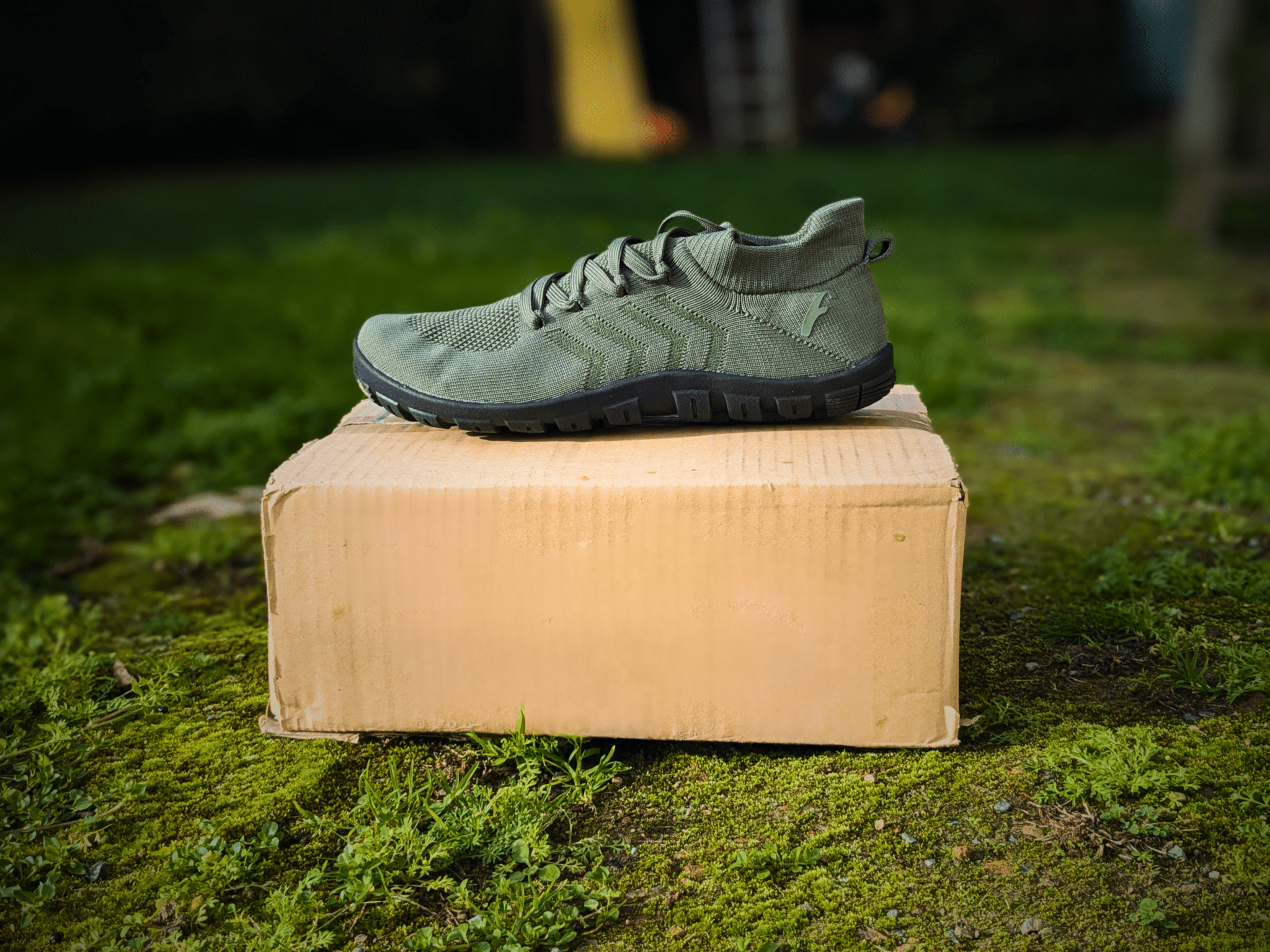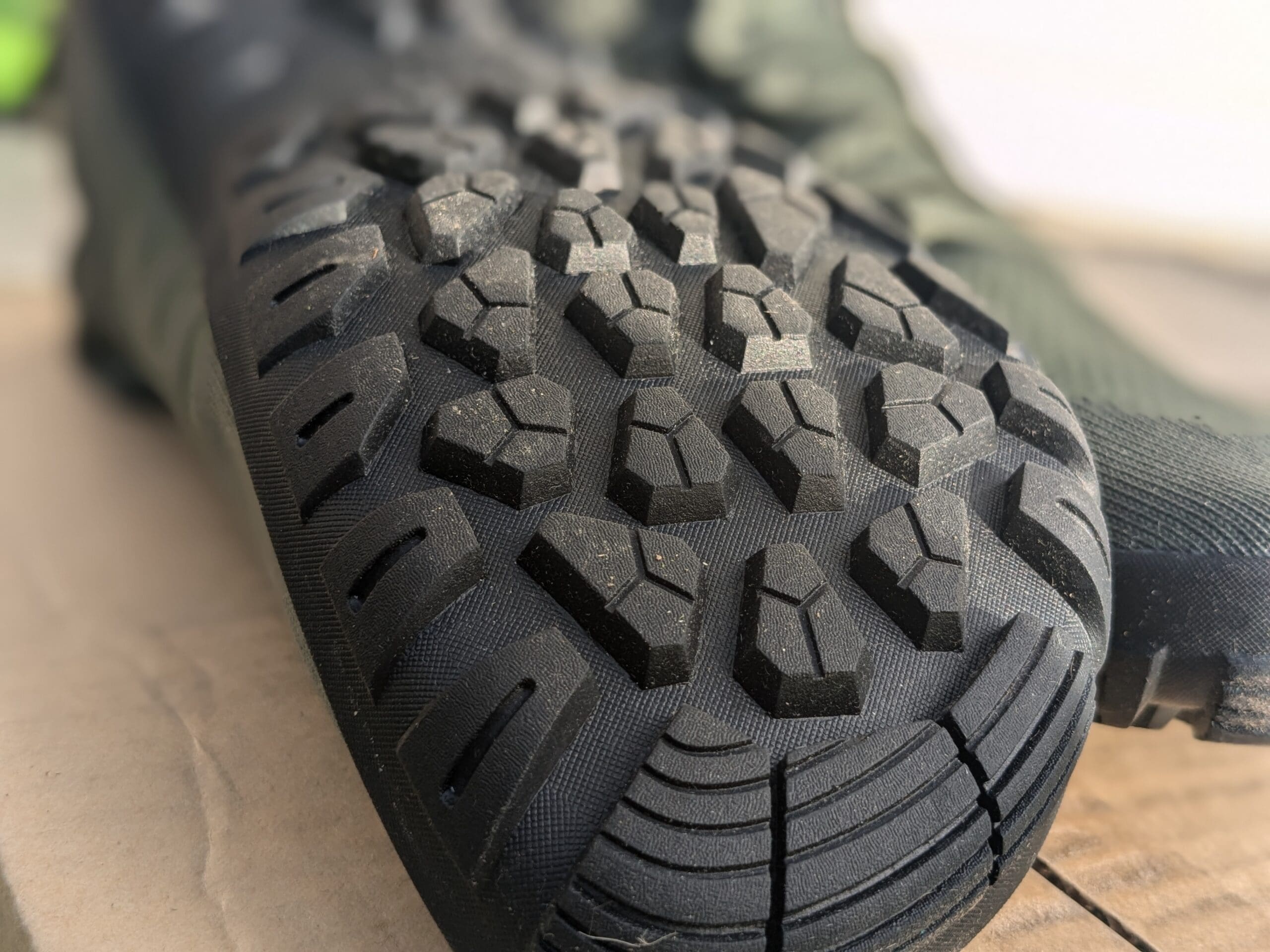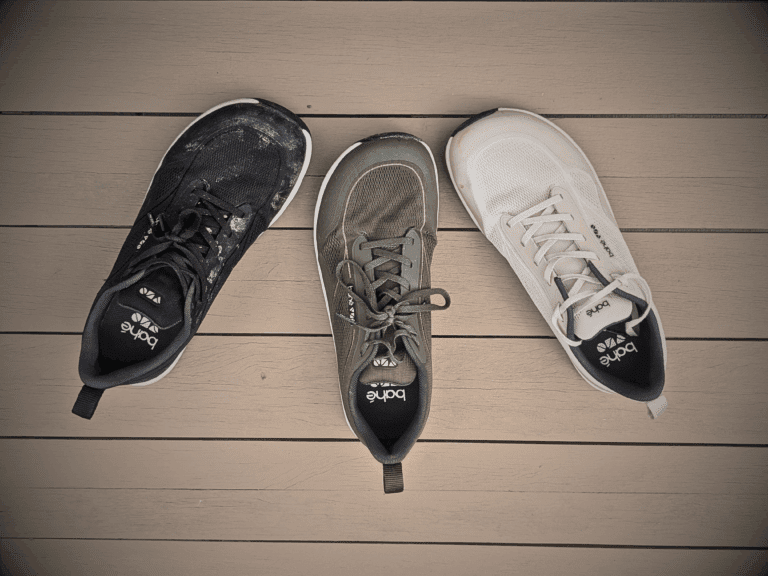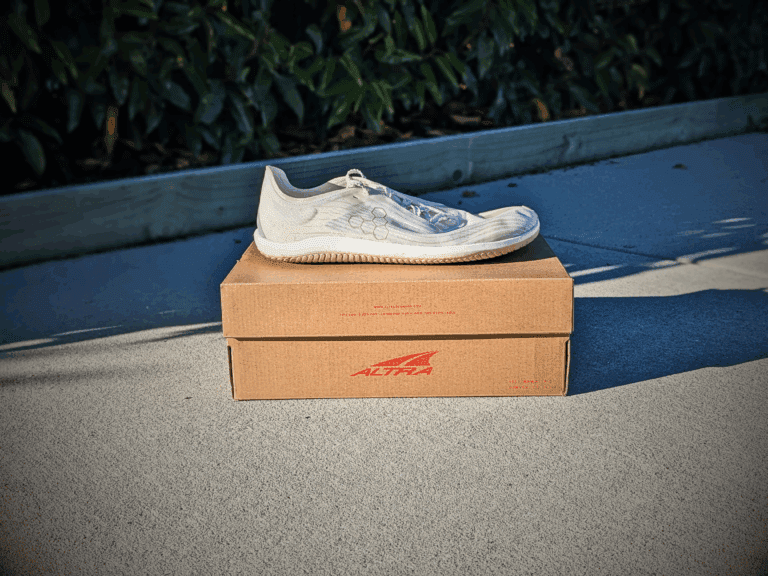Affiliate Disclosure: By clicking through the links on this page and purchasing the products, you’ll be helping me out. This is done because I receive a kickback from the sellers at no extra cost to you! Thank you so much for supporting us!
Weight
10.23 oz/ 290g for men’s EU43
Stack height
10.5mm total stack height (4mm lugs, 2.5mm insole)
Zero Drop
Made for
Casual option
Light hiking
Fit
High volume
Wide midfoot
Wide Toe box
True to size – ish
Feel
Flexible
Average ground feel
Sock-like
Pros & Cons
+ Barefoot Feel
+ Comfortable
– Not great for tough trails
The Freet Howgill isn’t your typical trail shoe. It’s a unique blend of casual comfort advertising its ability to be trail-capable, a combination that piqued my interest. I set out to see if this shoe could cater to both needs, offering a versatile solution for a variety of activities.
Boasting a supremely comfortable upper and a semi-aggressive outsole, the Freet Howgill seemed to strike the perfect balance between trail performance and casual comfort.
But does it perform? And does it fit?
That’s what we’re here to find out!
Wide shoe accommodating broader feet—This design is a blessing for those with wider feet, providing ample space without squeezing or discomfort. It’s a common theme I’ve felt through the Freet lineup, and it’s now often a brand I’m highlighting for when others mention barefoot brands aren’t wide enough. We’re not talking about width in the forefoot only; it’s also width in the midfoot that could help many of you if you previously found Vivobarefoot narrow in that area.
Which minimal running shoe is for you?
Take a quick 5-question quiz to identify the perfect minimal running shoe for your feet! You'll get both road and trail options based on your answers!
Deep shoe, suitable for higher-volume feet—The depth of the shoe is ideal for those who need extra room either in the toebox or over the top of the midfoot. Have you ever felt tightness in the shoe’s laces? Well, that’s likely a sign that you need a deeper shoe. Or maybe your toes touching the top of the shoe are super uncomfortable. Well, the Howgill could help alleviate that feeling with its depth and stretch material.

True to size with slight variations—Generally, the shoe runs true to size, but if you’re between sizes, consider sizing down for a snugger fit. I wish I’d done that. Personally, I’d opted to bump up around ¼ – ½ a size, but because the upper is so flexible, I believe it would have been better to come down in size. These shoes are more casual, so you don’t need a large gap at the end to prevent your toes from hitting the end of the shoe on technical descents. Leaving a smaller gap in a style like this is fine.
Flexible upper provides a comfortable fit—The upper material is highly flexible, which means it’s amazingly comfortable. It’s almost like wearing a sock! But with that comfort, you may get some foot movement during more vigorous activities such as technical trails or turf sports. That’s why I think this shoe stays firmly in the causal territory. Don’t get me wrong, you can run some gentle trails in them, but don’t take it up into the high alpine or mud pits!

Ankle cuff is higher but soft and flexible—While the ankle cuff extends higher, it’s designed to be soft and flexible, preventing any rubbing issues even during extended wear. This is true throughout the shoe’s design. I don’t believe you’ll ever have any uncomfortable rubbing at any point.
No structure in the heel cup—The heel cup is ultimately flexible, which works well for comfort but not so much for lockdown. It means that your heel may slip around in the shoe on uneven terrain. Again, it’s all about the situations in which you want to use this shoe.
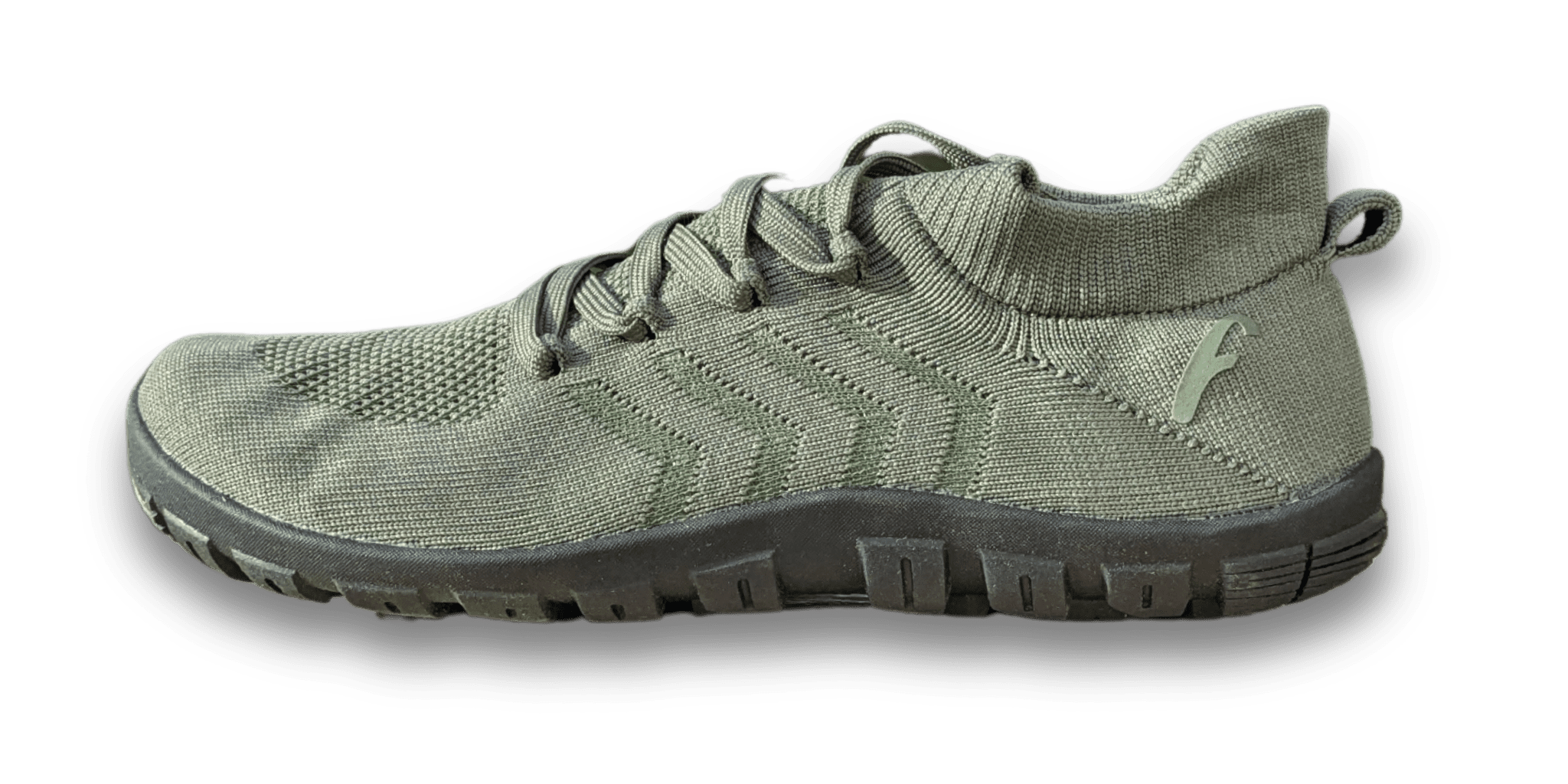
Freet Howgill
Super flexible underfoot with minimal material—The shoe offers a remarkably flexible underfoot experience, closely mimicking a barefoot feel with just a hint of cushioning. But that cushion doesn’t come from a midsole; it comes from 4mm rubber lugs! That allows the shoe to stay very flexible but with an air of squish. It’s an odd feeling, but I’m fast becoming a fan of this combination on the trails. Check out the Feldom for a great do-it-all trail option.

Allows natural foot flexing and expansion—You’ll appreciate how the shoe lets your feet move naturally, bending and expanding as needed, which enhances overall comfort. And this all comes from the upper material choice. As you walk and run, your foot flexes in all directions. When you add tougher materials to the upper, you restrict this motion. So, having a flexible upper allows your foot to work how a foot should! But there are drawbacks. It means your foot moves around in the shoe a little more, which isn’t great for the trail. So it’s all a trade-off.
Soft, flexible ankle cuff and heel with no rubbing issues—The ankle cuff and heel area are designed to be smooth and flexible, ensuring no discomfort or rubbing. So yes, this ankle may sit high and curve over the ankle bone, but it’s so soft that it’ll never cause an issue. Personally, I don’t usually opt for high-top options, but I think this design is neither a pro nor a con. It’s more down to the look of a shoe.

Approximately 7.5mm total stack height without insole—This stack height strikes a balance between ground feel and protection, offering a minimalistic yet protective experience. If you add the standard insole in there, you’ll get a stack height of 10.5mm, which is getting a bit chunky, but you’ve got to remember that 4mm of that stack height comes from the trail lugs. This is still fairly minimal for a trail shoe, and you can feel that on a run.

Freet Howgill
Outsole expected to be highly durable—The outsole features 4mm lugs built to withstand wear and tear, making it a robust choice for various surfaces. The fatter lugs allow for a high ground contact area, meaning the outsole works well for both soft and harder surfaces without increased wear. You’ll find this same outsole on the Feldom, and I think it strikes a great balance of grip and ground feel for many different conditions.
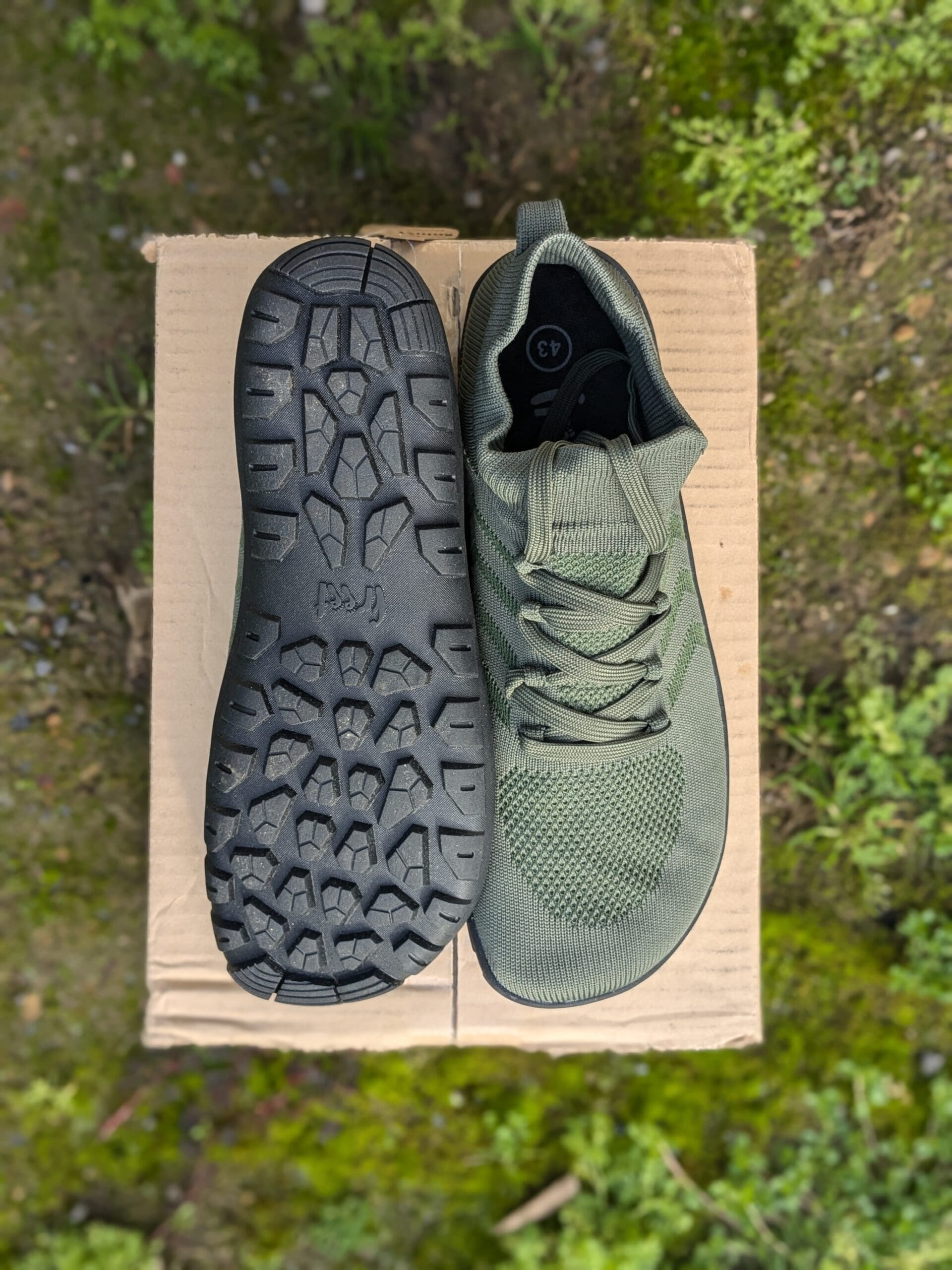
Upper may stretch over time—While the outsole is durable, the upper could stretch with use, which might impact the shoe’s fit and performance. As with any flexible material, the stretch may fade over time, and you’ll end up with a saggy sack. If you’re using this shoe on long runs, you’ll find this may occur quickly, but if you use the Howgill for casual everyday use, you’ll put less stress through the materials, and they’ll sag less quickly.
Bootie construction reduces seams—The innovative booty construction minimizes seams, enhancing durability and reducing potential weak points in the shoe. While there are some seams, that are stitched, most of the bootie is one piece, meaning less chance of failure. It extends under the foot, meaning there are no seams underfoot where the high-wear area is. That’s a big plus.

Weak lace eyelets—The lace eyelets are all part of the one-piece stretchy upper design with very little material reinforcing the holes. That’s a warning: don’t try to crank these laces tight! This is likely a weak point of the shoe. That said, you shouldn’t need to crank these laces as they are supposed to fit like a sock, compressing into all areas of the foot, rather than relying on the laces to keep the shoe in place.

Freet Howgill
I came in trying to find a casual option that could be worn in the trail-running world. While I did run in the Howgill, I would say it sways strongly towards the casual side of the market.
It’s uber comfortable, nice and minimal for a trail shoe, and fits wide and deep. These are all positives, depending on the shoe you’re looking for.
In the end, the Howgill is best suited for casual wear, light hiking, and gentle trails. It’ll handle a little mud and hard surfaces, too. But just don’t expect it to be perfect on technical rocky terrain.
At $115, it’s a decent price for this kind of shoe, which will likely last many years of use.
If you’re looking for a more tailored trail shoe with a similar ground feel, I suggest the Freet Feldom.
The Calver is perfect if you want a more aggressive option that’s great in mud and rocky terrain.

Freet Howgill
